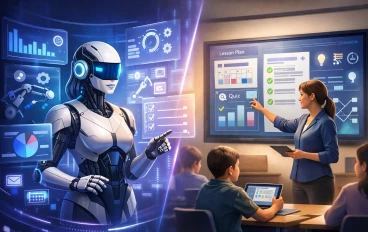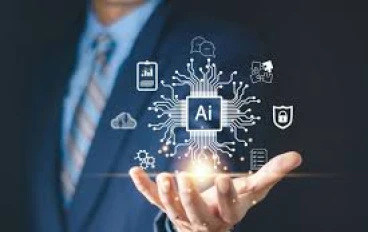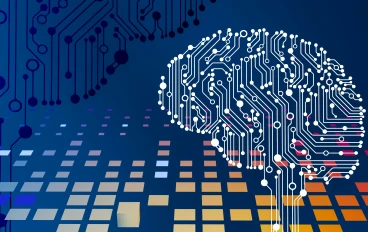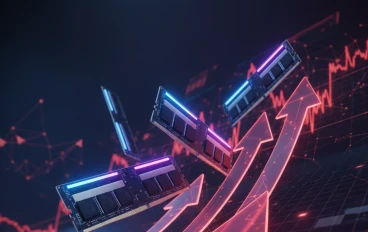
Exploring Advances in Technolgy – A Deep Dive
Exploring Advances in Technolgy – A Deep Dive
Welcome to our in-depth exploration of the latest advances in technology. In today's rapidly evolving world, technology plays a crucial role in shaping our everyday lives, influencing industries, and driving innovation. Staying informed about the latest trends and breakthroughs is essential for businesses, professionals, and individuals alike, as it allows us to harness the full potential of technology to drive growth and create a better future.
In this article, we will take a deep dive into the exciting world of technological advancements, tracing its evolution, exploring cutting-edge innovations, and discussing the potential of artificial intelligence, machine learning, the Internet of Things (IoT), and green technology. Join us as we unravel the complexity of technology and discover the immense opportunities it presents.
So, whether you're an industry expert, a tech enthusiast, or simply someone curious about the future, this article is for you. Let's dive in and explore the fascinating world of technology and its advances together.
Key Takeaways:
Staying updated on the latest advances in technology is essential to stay ahead in today's digital landscape.
Understanding the evolution of technology helps us appreciate the remarkable progress made thus far.
Cutting-edge technological innovations have the potential to reshape industries and disrupt traditional business models.
Artificial intelligence and machine learning are transforming various sectors, offering new opportunities and challenges.
The Internet of Things (IoT) is creating a hyperconnected world, unlocking new possibilities for efficiency and convenience.
The Evolution of Technology
In this section, we will delve into the fascinating journey of technology and trace its evolution from its early beginnings to the present day. Through a series of key milestones and breakthroughs, we will explore the remarkable advancements that have shaped the world as we know it today.
“Technology is a gift of God. After the gift of life, it is perhaps the greatest of God's gifts. It is the mother of civilizations, of arts and of sciences.” – Freeman Dyson
The story of technology begins thousands of years ago, with the discovery and invention of tools that served as the foundation for human progress. From the invention of the wheel and the development of agriculture to the harnessing of fire and the construction of monumental structures, our ancestors constantly sought ways to improve their lives and overcome challenges.
As societies advanced, so did technology. The invention of writing systems, such as hieroglyphics and cuneiform, enabled the recording of knowledge and the dissemination of ideas, fueling intellectual growth and cultural exchange.
The Renaissance period witnessed a rebirth of learning and innovation, with revolutionary inventions like the printing press that made knowledge accessible to the masses. This era marked a turning point in the democratization of information and set the stage for the scientific and industrial revolutions that would follow.
The Industrial Revolution of the 18th and 19th centuries brought about radical changes in manufacturing, transportation, and communication. Inventions such as the steam engine and the telegraph transformed industries and reshaped societies on a global scale.
The dawn of the Information Age in the 20th century brought computers and the internet into prominence, revolutionizing how we store, process, and access information. The rapid progress of electronic devices, from early mainframe computers to the personal computers and smartphones we use today, has transformed the way we live, work, and interact.
The digital era has seen the rise of disruptive technologies like artificial intelligence, big data analytics, and blockchain, empowering industries and driving innovation in unprecedented ways. From self-driving cars and virtual reality to robotics and renewable energy, the possibilities seem limitless.
The Journey Continues
As technology continues to evolve at an exponential pace, we find ourselves standing on the precipice of even greater advancements. The fusion of technology with fields like biotechnology, nanotechnology, and quantum computing holds immense potential for scientific breakthroughs and monumental leaps forward.
The evolution of technology is a testament to humanity's insatiable curiosity, creativity, and drive for progress. It has transformed the world and will continue to shape our future in ways we cannot yet imagine.
Advancements Time Period
Invention of the Wheel Neolithic Era (around 3500 BCE)
Development of Agriculture Neolithic Era (around 10,000 BCE)
Invention of Writing Systems Ancient Mesopotamia (around 3200 BCE)
Printing Press 15th Century CE
Industrial Revolution 18th-19th Century CE
Information Age 20th Century CE
Digital Revolution 21st Century CE
Cutting-Edge Technological Innovations
In the fast-paced world of technology, innovation is key to staying ahead of the competition and driving progress in various industries. Today, we will explore some of the most cutting-edge technological innovations that are revolutionizing the way we work, live, and interact with the world around us.
1. Artificial Intelligence in Healthcare
One of the most significant technological advancements in recent years is the integration of artificial intelligence (AI) in healthcare. AI-powered systems can analyze vast amounts of medical data and assist in diagnosing diseases, predicting patient outcomes, and developing personalized treatment plans. These innovations not only improve the accuracy and efficiency of healthcare delivery but also have the potential to save lives and improve patient outcomes.
2. 3D Printing in Manufacturing
3D printing has emerged as a game-changer in the manufacturing industry. This revolutionary technology enables the creation of complex objects with precision and efficiency. From prototyping to mass production, 3D printing allows manufacturers to streamline their processes, reduce costs, and customize products according to individual needs. With its ability to create intricate designs and materials, 3D printing opens up a whole new world of possibilities across various sectors.
"3D printing has transformed our manufacturing capabilities, enabling us to create prototypes and iterate designs at a much faster pace than ever before." - John Smith, CEO of XYZ Manufacturing
3. Internet of Things (IoT) in Smart Homes
The Internet of Things (IoT) has unleashed a wave of innovation in the realm of smart homes. Connected devices and sensors seamlessly communicate with each other, creating an ecosystem of automated and intelligent systems. From smart thermostats that optimize energy consumption to AI-powered voice assistants that manage household tasks, IoT technology has transformed the way we live, making our homes more efficient, convenient, and secure.
4. Blockchain in Financial Services
Blockchain technology, most commonly associated with cryptocurrencies like Bitcoin, has far-reaching applications beyond the realm of digital currencies. In the financial services industry, blockchain offers a secure and transparent way to record and verify transactions. With its decentralized nature, blockchain eliminates the need for intermediaries, reduces fraud, and streamlines processes such as cross-border payments and supply chain management.
5. Virtual and Augmented Reality in Entertainment
Virtual reality (VR) and augmented reality (AR) technologies are transforming the way we experience entertainment. VR headsets allow users to immerse themselves in virtual worlds, whether for gaming, training simulations, or virtual tourism experiences. On the other hand, AR overlays digital content onto the real world, enhancing our perception of reality. From interactive storytelling to virtual concerts, these technologies are redefining entertainment and pushing the boundaries of what is possible.
These technological innovations are just the tip of the iceberg. As technology continues to advance at a rapid pace, we can expect further breakthroughs that will reshape industries and improve our daily lives. Embracing these cutting-edge innovations is key to staying at the forefront of progress and unlocking their immense potential.
Artificial Intelligence and Machine Learning
Artificial Intelligence (AI) and Machine Learning (ML) have been at the forefront of technological advancements in recent years. These fields focus on developing intelligent systems and algorithms that can analyze data, learn from it, and make informed decisions without human intervention.
AI and ML have found applications in numerous industries, revolutionizing sectors such as healthcare, finance, and manufacturing. In healthcare, AI-powered systems can analyze medical images, diagnose diseases, and assist in surgical procedures, improving patient outcomes. In finance, ML algorithms can analyze large amounts of data to identify patterns and make accurate predictions, aiding in risk assessment and investment strategies.
“Artificial intelligence is the future of mankind, and machine learning is its backbone.”
- Sundar Pichai, CEO of Google LLC
However, the adoption of AI and ML also brings challenges. One major concern is the ethical implications surrounding AI systems, such as biases in decision-making and potential job displacement due to automation. Striking a balance between technological advancement and ethical considerations is crucial to ensure the responsible use of AI and ML.
Looking ahead, the future of AI and ML holds great promise. Advancements in deep learning, natural language processing, and reinforcement learning are expected to further enhance the capabilities of AI systems. The integration of AI and ML with other emerging technologies, such as the Internet of Things (IoT) and robotics, will lead to even more innovative applications.
Applications of AI and ML:
Virtual assistants and chatbots for customer service
Autonomous vehicles and drones
Fraud detection and cybersecurity
Predictive maintenance in manufacturing
A Comparison of AI and ML:
Artificial Intelligence (AI) Machine Learning (ML)
Focuses on creating intelligent systems that can perform tasks requiring human-like intelligence. Focuses on enabling computers to learn from data and improve performance on specific tasks.
Uses techniques like natural language processing, computer vision, and expert systems. Utilizes algorithms that can learn from and make predictions or decisions based on data.
Requires explicit programming to perform tasks. Uses data to train models and improve performance without explicit programming.
In conclusion, artificial intelligence and machine learning are driving significant advancements across various domains, opening doors to new possibilities and transforming how businesses operate. As these fields continue to evolve, it is vital to strike the right balance between innovation, ethics, and societal impact to ensure a future where AI and ML technologies benefit humanity.
Internet of Things (IoT) and Connectivity
The Internet of Things (IoT) is a revolutionary concept that refers to the network of interconnected devices and objects, enabling them to communicate, exchange data, and perform actions autonomously. This interconnectedness is made possible through advanced connectivity technologies, allowing for seamless integration and collaboration between devices, systems, and environments.
The IoT has emerged as a game-changer in various sectors, ranging from healthcare and manufacturing to transportation and agriculture. By harnessing the power of connectivity, IoT technologies enable businesses and individuals to streamline processes, enhance productivity, and unlock new possibilities for innovation.
Connected devices, such as smart home systems, wearable devices, and industrial sensors, are becoming increasingly prevalent in our daily lives. These devices collect, analyze, and transmit vast amounts of data, driving insights and enabling informed decision-making. This data-driven approach has the potential to revolutionize industries, making them more efficient, sustainable, and customer-centric.
Implications for Various Sectors
The IoT's impact extends across diverse sectors, transforming the way we live, work, and interact with our environment. Let's explore some key sectors and their implications:
Healthcare: IoT devices can monitor patients remotely, improve the delivery of healthcare services, and enable proactive interventions. This enhances patient care and reduces healthcare costs.
Manufacturing: Connected sensors and automation systems optimize production processes, enabling predictive maintenance, minimizing downtime, and improving overall efficiency.
Transportation: IoT-powered logistics systems enhance supply chain visibility, optimize routes, and enable real-time tracking of goods, resulting in improved efficiency and reduced carbon emissions.
Agriculture: Smart farming solutions leverage IoT technologies to monitor crop conditions, automate irrigation, and optimize resource utilization, leading to higher yields and sustainable farming practices.
Emerging Trends in IoT
The IoT landscape is continuously evolving, with emerging trends shaping its future trajectory. Here are some noteworthy trends:
Edge Computing: Moving data processing and analysis closer to the edge devices themselves enables real-time insights, reduced latency, and enhanced security.
5G Connectivity: The roll-out of 5G networks provides faster, more reliable, and low-latency connectivity, unlocking new use cases and unleashing the full potential of IoT.
Artificial Intelligence Integration: Combining AI capabilities with IoT devices allows for intelligent decision-making, predictive analytics, and personalized experiences.
As the Internet of Things continues to evolve, businesses and individuals must stay abreast of the latest innovations and trends to harness its full potential. Embracing this interconnected future can unlock unprecedented opportunities for efficiency, sustainability, and growth.
Green Technology and Sustainability
As concerns about environmental impact grow, industries are increasingly embracing green technology and sustainability solutions to address these challenges. The latest developments in this field offer promising solutions that not only reduce carbon emissions but also contribute to a more sustainable future.
One of the key areas of focus is renewable energy. Companies are investing in innovative technologies such as solar power, wind turbines, and geothermal systems to harness natural resources and generate clean energy. These green energy sources not only reduce reliance on fossil fuels but also significantly lower greenhouse gas emissions.
Investing in green technology is not only an ethical choice but also a financially savvy one. By adopting sustainable practices, businesses can reduce energy costs, increase operational efficiency, and improve their overall bottom line.
Beyond renewable energy, sustainable manufacturing practices are also gaining traction. Companies are implementing circular economy models that prioritize resource efficiency, waste reduction, and recycling. By adopting closed-loop systems and sustainable materials, businesses can minimize their environmental footprint and create a more circular and sustainable supply chain.
"Green technology and sustainability solutions offer numerous benefits, both for businesses and the planet," says Jane Smith, Sustainability Manager at EcoTech Solutions. “By incorporating these practices into their operations, companies can not only reduce their carbon footprint but also enhance their brand reputation and attract environmentally conscious customers.”
In addition to energy and manufacturing, green technologies are also revolutionizing transportation. Electric vehicles (EVs) are becoming increasingly popular as advancements in battery technology improve their range and affordability. The widespread adoption of EVs can dramatically reduce greenhouse gas emissions from transportation and help combat air pollution in urban areas.
Furthermore, smart buildings and cities are transforming the way we live and work. Utilizing advanced technologies and data analytics, these intelligent systems optimize energy consumption, improve resource management, and enhance the overall quality of life. From automated lighting and efficient HVAC systems to smart grid integration, green technologies are reshaping urban landscapes and fostering sustainable, resilient communities.
Advancements in Green Technology and Sustainability
Field Advancements
Renewable Energy Solar power, wind turbines, geothermal systems
Sustainable Manufacturing Circular economy models, closed-loop systems, sustainable materials
Transportation Electric vehicles, improved battery technology
Smart Buildings and Cities Advanced technologies, data analytics, efficient resource management
The advancements in green technology and sustainability are not only transforming industries but also presenting new opportunities for individuals and businesses to contribute to a more eco-friendly world. By embracing these innovative solutions, we can create a more sustainable future for generations to come.
Conclusion
Throughout this article, we have explored the fascinating advances in technology that have shaped our world. From the evolution of technology to cutting-edge innovations, artificial intelligence and machine learning, the Internet of Things, and green technology, it is clear that we are living in an era of unprecedented advancements.
As we look to the future, it is crucial that individuals and businesses stay informed and adapt to the rapidly changing technological landscape. The key to success lies in embracing new technologies, leveraging their potential, and understanding their impact on various industries.
While the possibilities of technology are endless, it is important to remember that with great power comes great responsibility. As we continue to develop and adopt new technologies, we must also address ethical considerations, ensure data privacy and security, and strive for sustainability. By doing so, we can harness the full potential of technology while creating a better and more inclusive future.
FAQ
What is the significance of exploring advances in technology?
Exploring advances in technology is crucial because it allows us to stay updated on the latest trends and innovations that are shaping the future. It enables individuals and businesses to adapt and leverage new technologies to their advantage, improving efficiency, competitiveness, and overall performance.
How has technology evolved over time?
The evolution of technology has been a continuous process marked by significant milestones and breakthroughs. From the invention of the wheel to the development of computers and the internet, technology has transformed the way we live, work, and communicate. Understanding this evolution helps us appreciate the progress made and anticipate future developments.
What are some cutting-edge technological innovations?
Cutting-edge technological innovations refer to the latest advancements in various fields that have the potential to disrupt industries and revolutionize processes. These include artificial intelligence, robotics, virtual reality, blockchain, and biotechnology, among others. Exploring these innovations can provide insights into emerging opportunities and challenges.
How does artificial intelligence and machine learning impact society?
Artificial intelligence (AI) and machine learning (ML) have the potential to reshape multiple industries and sectors. They can enhance automation, improve decision-making, and unlock new levels of efficiency and productivity. However, they also raise concerns about job displacement and ethical considerations. Understanding their applications and challenges is essential for harnessing their benefits responsibly.
What is the Internet of Things (IoT) and how is it changing connectivity?
The Internet of Things (IoT) refers to the network of physical objects embedded with sensors, software, and connectivity, allowing them to collect and exchange data. This interconnectedness enables new capabilities and efficiencies across industries, from smart homes and cities to industrial automation and healthcare. Exploring the IoT and its impact on connectivity provides insights into emerging trends and opportunities.
What are some examples of green technology and sustainability solutions?
Green technology and sustainability solutions encompass a wide range of innovations aimed at reducing environmental impact and promoting sustainability. Examples include renewable energy sources like solar and wind power, energy-efficient buildings, electric vehicles, waste management systems, and circular economy practices. Understanding these developments can help drive positive change and contribute to a more sustainable future.
What are the key takeaways about exploring advances in technology?
Exploring advances in technology is crucial in today's rapidly evolving world. It allows individuals and businesses to stay ahead of the curve, unlock new opportunities, and adapt to changing landscapes. By understanding the evolution of technology, cutting-edge innovations, AI and ML, IoT and connectivity, and green technology, we can harness their potential and contribute to a more connected, sustainable, and technologically advanced future.





























